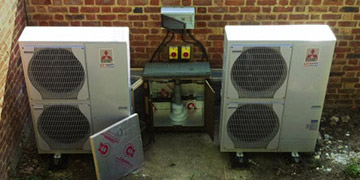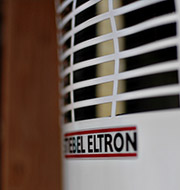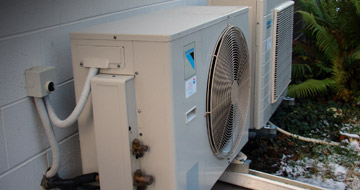





Heating
Renewable heating systems use different technologies to capture energy from the sun and use it to heat your property (often called space heating) and/or some other heating process such as providing hot water. We describe here heat pumps, solar thermal, hybrid or PVT, and biomass.
The term Biomass heating systems is often used to describe technologies that efficiently burn wood or plant matter.
All the other commonly used renewable technologies such as Heat Pumps, Solar Thermal panels and Hybrid panels collect, either directly or indirectly, the heat energy from the sun and concentrate it to heat the property or process.
We describe these main technologies in more detail below as an introduction for those that want to know more. Not sure which is the right system for your property? Call Cosmos Energy to discuss the right system for your property now.
Heat Pumps
This section describes Air Source heat pumps and Ground source heat pumps
(closed loop) which are the two most commonly used heat pumps. However there are other variations such as water-to-water and open loop heat pumps which can be more effective in particular situations.  Again, this is a question of which best suits the property and we will always try and recommend the solution which best fits your situation. Cosmos Energy are approved installers of Mitsubishi and Daikin and have been trained on their products, both of whom are market leaders. We have also been specifically trained on De Longhi and Lailley & Coates heat pumps along with formal training of the technology and have worked on a wide variety of other manufacturers’ systems and with their technical departments.
Again, this is a question of which best suits the property and we will always try and recommend the solution which best fits your situation. Cosmos Energy are approved installers of Mitsubishi and Daikin and have been trained on their products, both of whom are market leaders. We have also been specifically trained on De Longhi and Lailley & Coates heat pumps along with formal training of the technology and have worked on a wide variety of other manufacturers’ systems and with their technical departments.
Heat pumps can be used efficiently and cost effectively to heat newly built and existing properties. They are a well-developed technology which work on the same principle as a fridge or air conditioner but have more sophisticated controls to ensure that they can operate efficiently. Their main task is to transfer heat from one place to another using a compressor which pumps refrigerant around a closed circuit. The heat energy is transferred from a source of heat (normally collected from the air or the ground) to where the heat is required (often to heat a property or its hot water requirement). The compressor is driven by electricity but the amount of electrical energy required to drive the compressor is normally only between a quarter and a third of the total heat energy that can be delivered.
The most efficient operation of any heat pump (eg. when the amount of electrical energy used is a low proportion of the heat energy which is delivered) is when the temperature difference between the heat source and the heat delivered is small. Examples of systems which can easily be designed to run efficiently include underfloor heating systems as they require only low temperature water when compared to most radiators. Swimming pools are another example.
The need to design an efficient system makes it essential that the whole property is properly assessed. This will ensure that the heat source, heat pump and heat emitters (eg radiators, fan heaters, underfloor or radiant wall heating) are properly matched. We sometimes find that the reason why there are high running costs is because an installer has not carried out this assessment or has tried to avoid the additional cost and complications of installing the extra equipment to properly balance the system.
We never install or advise on Heat Pumps without assessing the whole heating system and this often extends into advising on improving Energy Efficiency. This is usually the most cost effective first investment that property owners should make and often includes recommendations to reduce draughts and improve insulation in critical areas of the property.
Air Source Heat Pumps
The most common type is an air-to-water heat pump. As the name implies these collect heat from the air and transfer it into heating hot water to higher temperatures. Most often this is then used for heating by circulating the hot water around a normal central heating circuit or a coil in a hot water tank. Air source heat pumps are the simplest and least expensive form of heat pump to install and can be very efficient but won't normally have the best efficiency levels when compared to some other types.
The siting of the outdoor unit can be critical to ensure a good airflow of ambient air and therefore high efficiencies. High temperature heat pumps (ie producing water at temperatures above 60°C) can work well as they reduce the cost of changing or supplementing existing heat emitters such as radiators. However such systems will always have higher running costs than lower temperature systems.
Air source heat pumps can work well even in very cold climates where air temperatures may get down to -15oC in mid-winter. They are common in Scandinavian countries so operating anywhere in the UK is not a problem.
Ground Source Heat Pumps (closed loop)
These collect heat energy from the ground by circulating a water based solution around pipes buried in the ground. These pipes are either horizontal systems buried about 1.2 metres below the ground surface or vertical, borehole systems which often go down to 90 metres.
They are inherently more efficient than air source heat pumps because in the coldest periods of the year when the heating demand is highest, the heat source will be warmer than with air source heat pumps. The problem is that the cost of installing the ground collector loops is obviously expensive so there has to be a trade-off between initial high installation costs and reduced future running costs.
Ground source heat pumps can work particularly well when combined with hybrid panels which improves the heat energy which is collected and enhances the capacity and efficiency of the heat pump while offsetting some of the electricity usage of the heat pump.
The most frequent reason for Ground Source heat pumps not working efficiently is because the ground collectors have been undersized – often to reduce the initial installation costs or because an assessment of the type of ground was not properly considered. This can lead to problems of a lack of heating capacity and high running costs as the ground gets colder and colder.
Solar Thermal
Solar thermal panels quite simply collect heat from the sun by absorbing heat from the sun’s rays. This in its simplest form is simply a black surface but they often use special black coatings and materials to maximise the absorption effects. The collectors are then encased in insulation with special non reflective glass to prevent the heat energy once collected, being lost. The heat is then collected for use elsewhere by running water based liquid through channels in the collector.
There most efficient use is for lower temperature applications like heating swimming pools.
However, the most common use of Solar thermal panels is to heat domestic hot water where they can work well but it should be remembered that they boost or supplement rather than replace other means of heating hot water. This is because it is difficult to use all the heat that is collected because there is nowhere that the energy can be stored once the hot water tank is up to temperature.
Temperatures reaching 160-200 degrees centigrade are not unusual when there is no system flow (this is also known as ‘stagnation’) and the system needs to be designed to prevent safety problems, loss of system fluid and undue stress to components.
Hybrid or Photovoltaic-Thermal panels (also known as PVT)
These use the same panel to collect and harness both heat and light energy from the sun. These panels have both photovoltaic (PV) cells as well as collector pipes running through them to collect heat energy. They can therefore be used to heat hot water as well as generate electricity. They are therefore the most efficient use of a given area of roof space on a property.
When combined with a heat pump Hybrid panels can have the benefit that the technologies can be designed to operate more efficiently together than when they are in separate – see also Hybrid in Heat Pump. More information available on request.
Biomass
Biomass systems have the significant advantage of being efficient in providing higher temperatures than most other renewable heating technologies. This means it can be connected to traditional systems which have been heated by conventional boilers without changing or altering the heat emitters.
Biomass systems are generally installed as pellet boilers for smaller domestic properties or as woodchip boilers for very large domestic or small industrial systems. For this reason they can also work well when supplying heat to a number of adjacent properties as part of a District heating system.
There are several other key features which prospective owners should be aware of:
- Modern biomass boilers are very efficient burners of biomass and are highly automated. However they will normally require more maintenance and general supervision than most other renewable energy technologies.
- Biomass fuels are one of the cheapest fuel sources but there are a number of factors affecting both the availability of supply and the quality which a prospective owner needs to be aware of.
- Wood pellets are a very easy to handle fuel but are much more expensive (possibly 80%+ more expensive) than woodchip. However woodchip needs expensive additional equipment for storage and automated feeding of the boiler and there are price advantages if you are able to receive fuels in bulk.
- Log burners use a high temperature gasification process to ensure clean burning but there are relatively few which meet MCS quality standards – always check whether a potential purchase is MCS approved if you want to receive government incentive payments. This is particularly true now that the government is reviewing the air emission standards which biomass boilers will need to meet.
- They work best where there is a high and continuous heat requirement.
- The efficiency of burning biomass is significantly affected by the moisture content so the quality of the supply and storage of the fuel is important.
- The government is setting up a system of approved, sustainable sources for biomass fuels. You will need to purchase from these sources in order to be eligible for government financial incentives such as the Renewable Heat Incentive (RHI).
- Biomass fuel prices have proven to be somewhat erratic so far as the industry gets started, however there are now a number of large scale distributors. How the supply and demand of this industry develops will determine future fuel prices.
Further useful independent information on Biomass systems and on the current cost of fuels can be found at
The Energy Saving Trust
Nottingham Energy Partnership